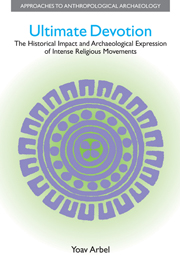 Ultimate Devotion
Ultimate Devotion 4 - A Quest for Immediate Salvation
from Part I
Summary
Millenarianism is one of the more striking and identifiable manifestations of religious intensity. In its radical forms, it rarely allows any kind of adaptation to extant political and social realities and demands from its disciples a degree of commitment unmatched by any other ideological frame-work. It is precisely this potential extremism that can help to isolate and crystallize the causes and motives behind the tendency of people to make religion the focus of their lives and, in some cases, sacrifice themselves for its sake. The two following chapters comprise a general survey and the analysis of specific cases. Since the religious phenomenon and the case studies are well known and extensively researched, my intention is not to introduce new data or innovative models, but to examine them within the broader context of religious intensity, perceive similarities and differences, and sharpen the distinctions between millenarian and non-millenarian intense religious movements.
The Judeo-Christian Origins of Millenarianism
The term “Millennium” originally referred to the intermediate period of a thousand years between the Second Coming of Jesus and the Final Judgment, as relayed in Revelation 20:4—6:
Then I saw thrones, and those seated on them were given authority to judge. I also saw the souls of those who had been beheaded for their testimony to Jesus' and for the word of God. They had not worshipped the beast or its image and had not received its mark on their foreheads or their hands.[…]
- Type
- Chapter
- Information
- Ultimate DevotionThe Historical Impact and Archaeological Expression of Intense Religious Movements, pp. 41 - 51Publisher: Acumen PublishingPrint publication year: 2009
